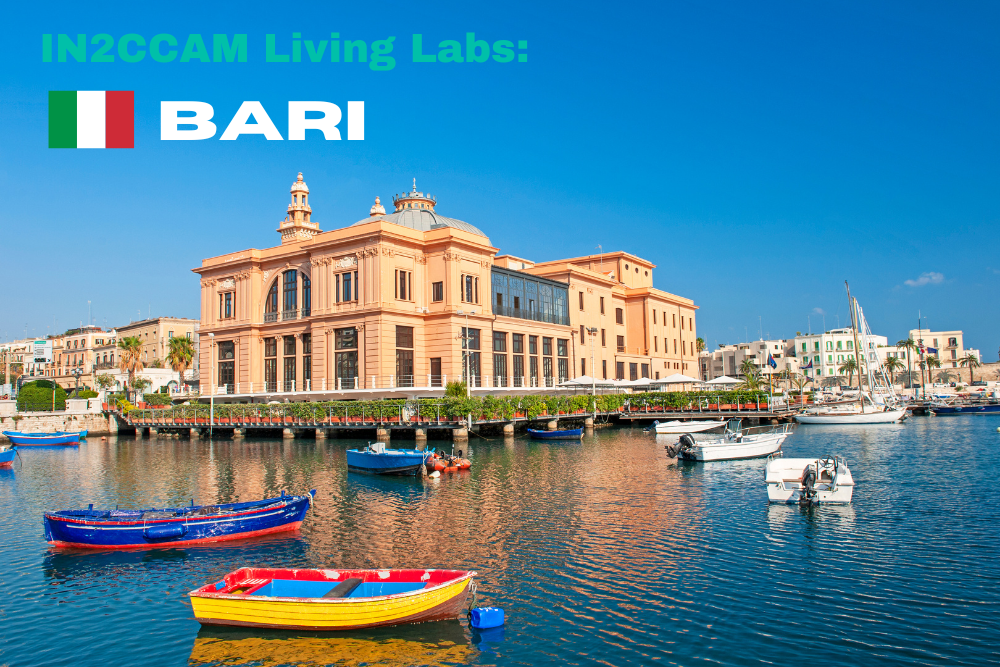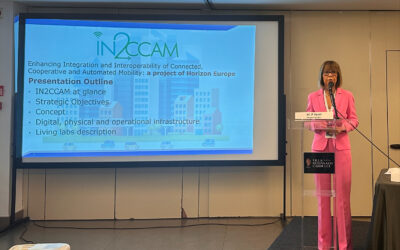Welcome to the final chapter of the “IN2CCAM Uncovered” series, where we explore the unique particularities and challenges of our project’s pilot cities and the services that our Living Labs will provide. This final stop takes us back to Italy, specifically the Bari follower Living Lab, home to the IN2CCAM project coordinator, POLIBA.
Bari is the capital of the Puglia region in southern Italy. Its urban core is defined by a high population density, with 325,000 inhabitants, expanding to over 1.3 million in the wider metropolitan area. Beyond its rich history and captivating old town, Bari boasts three universities, an airport, and growing weight in sectors like logistics, mechanics, aerospace and chemistry, establishing itself as a vibrant cultural and economic hub in the Adriatic region. Recognising the need for enhanced mobility solutions, the municipality of Bari, a partner in the IN2CCAM project, launched the “Bari Smart City” initiative to build a solid urban connectivity infrastructure, leveraging the Internet of Things (IoT) and emerging technologies. Bari also participates in various EU-funded projects dedicated to fostering innovation and piloting novel technologies.

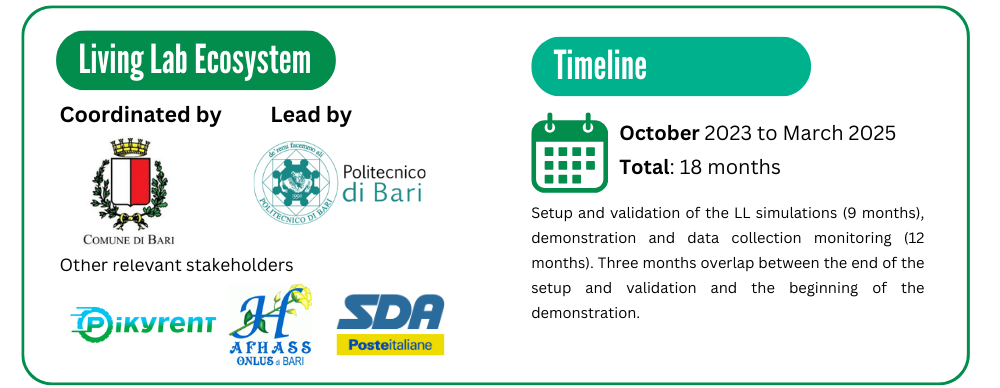
Promoting Inclusive and sustainable mobility through advanced routing
To respond to two major transport challenges of the city, the Living Lab is testing and validating CCAM service through simulations and emulations. The first use case is based on the creation of a “Route Planner” to address users’ concerns and promote their acceptance of the adoption of CCAM. This tool considers user type, preferences, and real-time traffic conditions to suggest optimal routes. Additionally, features like support for people with disabilities, gender-specific navigation, and inclusion of relevant locations like schools and parks, ensure inclusivity and cater to diverse user groups. The LL also leverages AI and machine learning techniques to optimise routes and traffic light management, fostering a more efficient and adaptable urban transport network. This comprehensive approach aims to improve travel efficiency but also promote inclusivity and wider acceptance of CCAMs, contributing to a smarter and more sustainable future of urban mobility.
This Route Planner seeks to add up to the project’s expected impact in terms of societal benefits, promoting inclusivity to improve the overall citizenship quality of life through reduced travel times. Environmentally, the planner aims to reduce emissions by optimizing routes and potentially encouraging cycling. Smarter traffic management through AI can further decrease fuel consumption and emissions. Safety is another relevant aspect of the IN2CCAM project. Real-time data and machine learning can suggest safer routes, reducing traffic accidents and aiding emergency responses. The data collected can also be used for long-term safety improvements through predictive analysis.
“This use case is significant because it fills a gap left by public transport services such as the request to use public transport without excessive travel to reach the pick-up station. This future service is of fundamental importance for disabled people and for geographical areas not covered by public transport”, Paolo Ferrari (POLIBA).
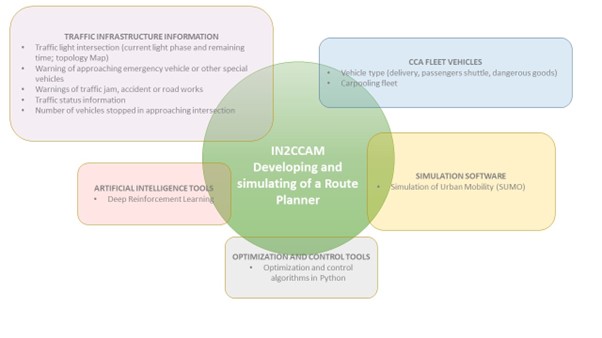
The five main actors of the UC #6 “Developing and simulating of a Route Planner”
Optimizing urban deliveries: simulations for real-world impact
In its second use case, the Bari Living Lab focuses on last-mile deliveries in urban areas, striving to reduce traffic by interconnecting several micro-HUBs for storing, sorting and distributing goods, optimising loads, and reducing empty miles. This shift from the centralised, large-scale distribution model, combined with simulations and digital twin on dynamic routing, on-demand services and potential night-time deliveries to leverage off-peak hours aims to reduce the number of vehicles on the road, especially empty ones. This virtual model will allow for planning the gradual integration of autonomous vehicles into freight transport. The project utilises various data sources, including historical data, real-time information, and forecasting models, to predict future traffic and emission reductions.
This innovative project tackles urban congestion through a transformed approach to freight transport. By establishing a network of strategically located hubs and utilizing AI-powered logistics strategies, the project aims to achieve a multifaceted impact:
Fewer vehicles on the road, combined with optimized routes and minimized empty runs, will lead to a significant decrease in emissions from freight transport, particularly beneficial for urban areas struggling with air quality concerns. The reduction in traffic congestion naturally translates to fewer accidents. Additionally, the project leverages AI and data analysis to avoid high-risk areas and times, further minimizing collision risks. Advanced technologies and real-time data ensure that every journey is as energy-efficient as possible, potentially fostering the adoption of electric vehicles as these options become more feasible. This approach, requiring less investment compared to other initiatives, offers a promising path towards creating cleaner, safer, and more efficient urban environments.
“This use case will significantly improve the situation of the historic city centres. It will certainly lead to a decrease in traffic with a consequent decrease in air and sound pollution. Furthermore, this use case could be interesting for a customer because she/he could perceive an improvement in their privacy by receiving the goods by an autonomous vehicle without direct contact with a courier”, Paolo Ferrari (POLIBA)
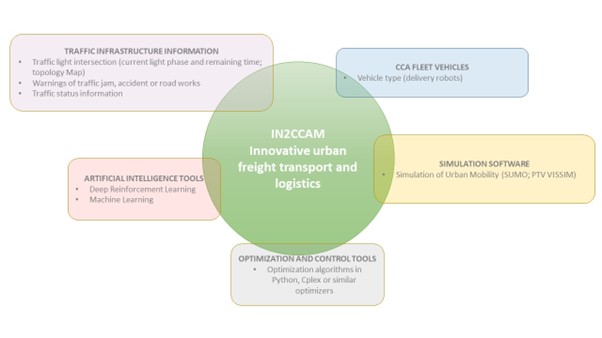
“Innovative urban freight transport and logistics”

“Innovative urban freight transport and logistics”: architectures of Scenario 1 (as is) and Scenario 2 (to be).

